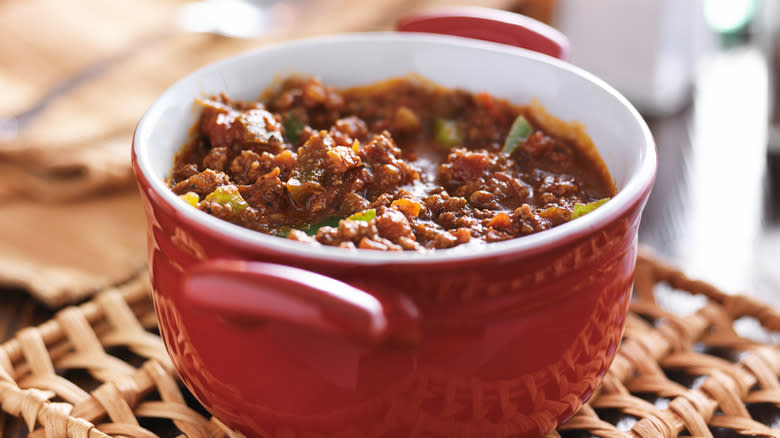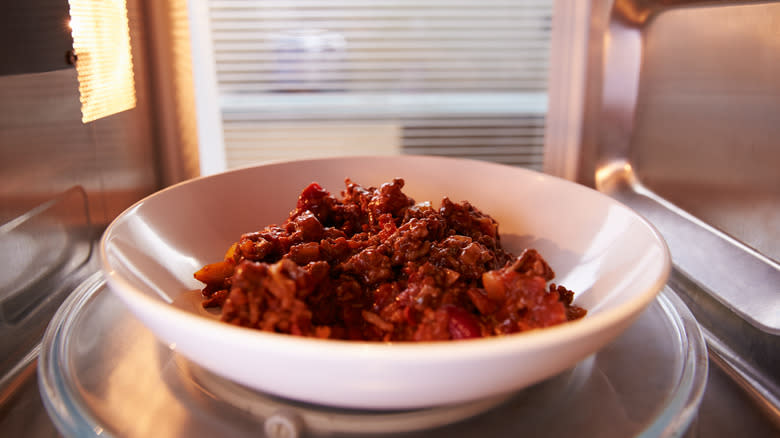Why Chili Is Such An Ideal Dish To Reheat The Next Day

You don't have to be a card-carrying leftovers lover to know that some foods are just better when reheated the next day -- especially chili. You'd be hard-pressed to find a chili that doesn't become even more flavorful after a brief stint in the fridge. Plus, if you make your chili a day ahead of time, you'll have dinner ready to go, which can be particularly helpful for hosting dinner parties or bringing a dish to share at a potluck.
Aging creates roundness in the flavor profile and mellows the distinct notes into a synchronous tapestry of intermingling tastes. Allowed to rest over time, long protein chains break down into shorter ones, meaning those complex carbs and scratches become simple sugars, which have a noticeably sweeter taste. So, maybe it's less accurate to say that leftover chili is necessarily "better," but it is milder, rounder, and sweeter after a day in the fridge.
A series of chemical reactions also happen overnight in the fridge that produce different flavor molecules. If your chili tastes different the next day, that might be because it actually is different. The meat releases collagen and gelatinizes into a thicker, more luxurious texture. Same deal with vegetarian chili; the starches in beans break down, adding richness and viscosity. Plus, during that overnighter, the flavors soak into each other for a chili that's greater than the sum of its parts. It's the same reason why you might slam ribs or tofu in a 24-hour marinade.
Read more: 21 Delicious Ways To Use Up Leftover Rice
Livin' It Up With Leftovers

Admittedly, there are some caveats to the leftover chili phenomenon. It's difficult to pinpoint specifically which is the most impactful factor at play. It might also have more to do with the length of the actual cooking process than the length of the aging. For instance, a batch of chili that's simmered in a crockpot for 10 hours is going to offer different flavors than a quicker chili made on the stove. Or maybe after smelling that wafting chili in your kitchen as you cook, your olfactory system becomes desensitized, and you need an extra day to approach that lovin' bowlful with an unclouded nose.
Either way, good chili will be killer on day one or day three. But, while garlic, onion, and chiles release their flavorful oils as they cook, they continue to release those oils as the chili cools. The fat-soluble flavor compounds disperse throughout the batch for extra bang -- but on the flip side, some punchier spices tend to lose their potency over time. An extra dash of cumin or paprika might be necessary on day two or three. If you like your chili on the spicier side or with a little more acidity, a dash of hot sauce or a squirt of lemon juice is all it takes to revive those leftovers one or even a few days out. For an extra flavorful finish, pair your day-old chili with jalapeño cheddar cornbread smeared with salted butter.
Read the original article on Tasting Table.

 Yahoo Sports
Yahoo Sports 
